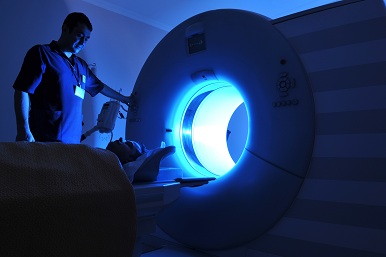Shielding hospital workers from radiation

date: 11/04/2014
Project: Optimization of radiation protection of ...
acronym: ORAMED
See also: CORDIS
Contact: www.oramed-fp7.eu
ORAMED research team helped improve both the safety and efficacy of the use of radiation in diagnostics and therapy through new methodologies to assess and reduce radiation exposure. The work of the project team responds to earlier research that showed how high doses of radiation could be delivered to hands and other extremities not covered with protective equipment – and that there was little systematic analysis of staff radiation exposure in nuclear medicine and interventional radiology.
“So far, we have had a poor understanding of how much radiation medical staff are exposed to when they work in this field,” comments ORAMED’s project coordinator, Filip Vanhavere, from the Belgian Nuclear Research Centre SCK-CEN. “This project lays down safe working procedures with respect to radiation protection, while also developing a specific device to measure radiation doses to the lens of the eye,” he adds.
ORAMED researchers carried out a thorough investigation of radiation exposure in European hospitals, and conducted computer simulations to identify the most important factors affecting radiation doses to the eye lens and other extremities. The team also analysed the factors that influenced radiation exposure.
Data from hand exposure during nuclear medicine interventions helped shape the practical guidelines, recommendations and training packages that eventually emerged for routine monitoring. The researchers found, for example, that the maximum level of radiation to the skin on hand was three to six times higher than what is normally measured.
“We drafted our guidelines taking into account a large database of people working in nuclear medicine. We looked at all working parameters and made a significant amount of measurements across Europe,” says Vanhavere. “Our recommendations cover methods of working and shielding the body, the time limits for exposure and basic good and bad practises,” he comments.
ORAMED’s research team had a particular focus on eye lens exposure in interventional radiology. Before the prototype dosimeter was designed by the ORAMED team, there was no suitable device for eye lens radiation monitoring, nor any conversion coefficients or calibration procedures available. “Most of the existing active personal dosimeters (APDs) were developed for nuclear industry, where the type of radiation is not the same as the one found in hospitals. These dosimeters are ineffective in detecting low energy fields,” explains Vanhavere.
ORAMED project is expected to help improve radiation protection standards for medical staff. “The practical guidelines that have been developed will be used in hospitals for many years to come,” says Vanhavere. “We have made an important contribution to enhancing the safety of medical staff performing these procedures, and have filled an important gap in radiation protection,” he concludes.
